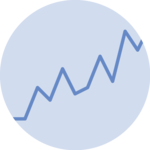The Problem with Dual Y-Axes

A dual Y-axis chart shows the evolution of two variables. The first variable is represented by the left axis, while the right axis represents the second variable.
This chart type is popular because comparing the evolution of two variables is a common need. However, it can also be misleading and should be avoided in 99% of cases. Let's explore why!
Data
The following graph compares the evolution of GDP between 2004 and 2023 for the world (left axis) and for France (right axis).
I found the data on the World Bank website, inspired by this Datawrapper blog.
🚨 Why Dual Y-Axis Charts Are Misleading
Dual Y-axis line charts are problematic because the axis limits can be easily manipulated, allowing the author to completely alter the perceived story.
Take a look at the following examples. Each chart uses the same data and design, but the axis limits vary, dramatically changing the interpretation:
If you prefer, you can also manually change the axis limits thanks to the 2 sliders below:
Takeaway?
I don't want to write yet another post about when dual Y axes are acceptable or what the alternatives are. Lisa already wrote the definitive article on this topic, it's impossible to improve upon it.
My hope is that this interactive playground helps you gain a real intuition about the issue. After all, as they say, an interactive graph is worth a thousand words! 🙃
Contact
👋 Hey, I'm Yan and I'm currently working on this project!
Feedback is welcome ❤️. You can fill an issue on Github, drop me a message on Twitter, or even send me an email pasting yan.holtz.data with gmail.com. You can also subscribe to the newsletter to know when I publish more content!



